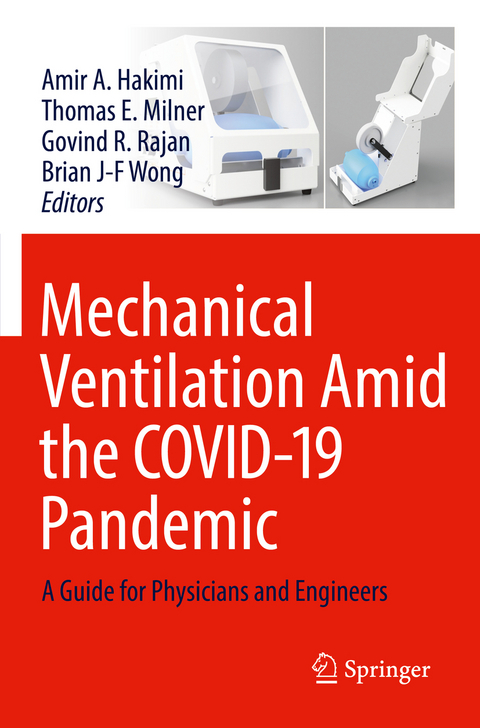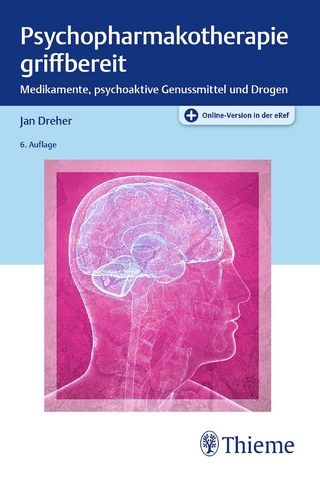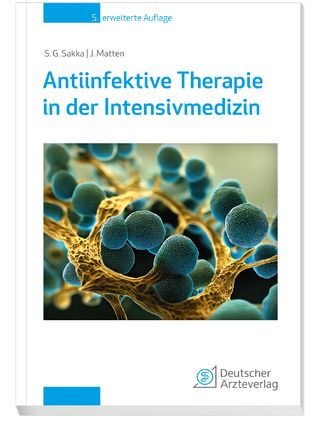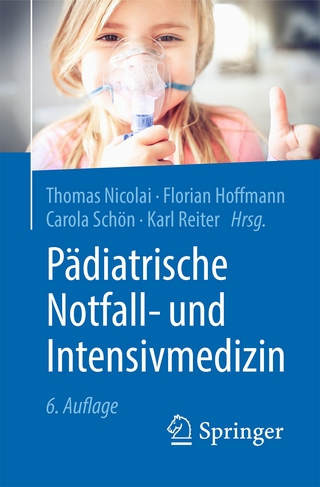
Mechanical Ventilation Amid the COVID-19 Pandemic
Springer International Publishing (Verlag)
978-3-030-87980-8 (ISBN)
Amir A. Hakimi, MD, is a resident in the Department of Otolaryngology – Head and Neck Surgery at Medstar Georgetown University Hospital. He received his Bachelor of Science degree in Neuroscience at the University of California, Los Angeles. He then graduated from Chicago Medical School at Rosalind Franklin University of Medicine and Science. During medical school, he became involved in clinical and translational research under the mentorship of Dr. Brian Wong. Dr. Hakimi has published numerous articles in peer-reviewed scientific journals and he developed a medical application for the iPhone to expedite the diagnosis of ocular injury. Thomas E. Milner, PhD, is Director of the Beckman Laser Institute and Medical Clinic and Professor of Biomedical Engineering and Surgery at the University of California – Irvine. He received his bachelor's and master's degrees from the Colorado School of Mines, and his Ph.D. from the University of Arizona. Dr. Milner's research interests are in the fields of optical-based therapeutics and diagnostic imaging, biomedical optics sensors, and optical tomography. He has published more than 180 journal articles, holds 55 issued U.S. patents and has started two technology companies. Dr. Milner is a fellow of the National Academy of Inventors, the American Institute for Medical and Biological Engineering and the American Society for Lasers in Medicine and Surgery. Govind R. Rajan, MBBS, is an Anesthesiologist in Orange, CA, and is affiliated with the UC Irvine Medical Center. He received his medical degree from Maulana Azad Medical College and has been in practice for 29 years. He also speaks multiple languages, including Hindi. He specializes in Critical Care Medicine. Brian J-F Wong, MD, PhD, is Professor and Director of the Division of Facial Plastic Surgery in the Department of Otolaryngology-Head and Neck Surgery at University of California – Irvine Medical Center. Dr. Wong’s clinical practice is based at both UC Irvine Medical Center and the Beckman Laser Institute and Medical Clinic. He graduated Summa cum Laude with a bachelor’s degree in Biomedical Engineering from the University of Southern California and earned his medical degree from Johns Hopkins University. He also studied engineering at Oxford University as a Rotary Foundation Scholar and medical physics at the University of Amsterdam. Dr. Wong’s research interests are in the field of biomedical engineering with specific interests in medical device development and laser applications in medicine. He has more than 100 publications, and his research is funded by the National Institutes of Health, Department of Defense, and the Health Science Partners.
History of ventilator devices.- Ventilator splitters: requirements and feasibility.- SARS CoV-2 transmission and innovative protective barriers.- What is a bridge ventilator and why is it needed?.- Fundamental requirements for a bridge ventilator.- Categorization for emergency ventilators amid COVID-19 pandemic.- Mechanics of resuscitation bag.- How to compress a bag: an overview of mechanical and pneumatic methods.- Choosing the right motor: considerations and concerns.- Re-purposing positive airway pressure machines (CPAP and BiPAP) for ventilators.- The role of non-invasive ventilation to treat COVID-19 induced lung disease.- Categorization of non-invasive ventilators amid the COVID-19 pandemic.- An appraisal of FDA-approved emergency ventilator designs.- DIY: A detailed guide to build your own bridge ventilator.- Regulatory considerations for ventilator production.- Post-regulatory concerns: liability, risk mitigation, and more.
| Erscheinungsdatum | 16.02.2023 |
|---|---|
| Zusatzinfo | XII, 273 p. 67 illus., 58 illus. in color. |
| Verlagsort | Cham |
| Sprache | englisch |
| Maße | 155 x 235 mm |
| Gewicht | 444 g |
| Themenwelt | Medizin / Pharmazie ► Medizinische Fachgebiete ► Intensivmedizin |
| Medizin / Pharmazie ► Physiotherapie / Ergotherapie ► Orthopädie | |
| Technik ► Maschinenbau | |
| Technik ► Medizintechnik | |
| Schlagworte | BIPAP • Bridge Ventilator • Covid-19 • CPAP • Low-cost Ventilators • Mechanical ventilation devices • SARS CoV-2 Transmission • Ventilator Devices • Ventilator Splitters |
| ISBN-10 | 3-030-87980-1 / 3030879801 |
| ISBN-13 | 978-3-030-87980-8 / 9783030879808 |
| Zustand | Neuware |
| Informationen gemäß Produktsicherheitsverordnung (GPSR) | |
| Haben Sie eine Frage zum Produkt? |
aus dem Bereich


